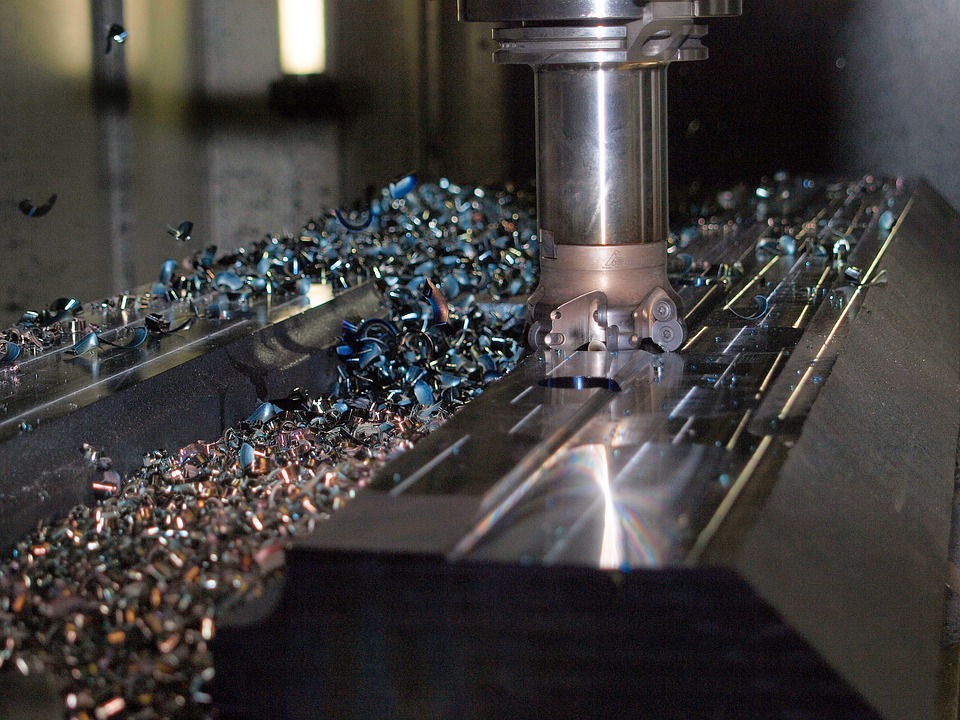Fasteners and Machining: Enhancing Longevity and Efficiency in Production
Fasteners and Machining: Enhancing Longevity and Efficiency in Production
Blog Article
Navigating the World of Fasteners and Machining: Techniques for Accuracy and Rate
In the intricate realm of fasteners and machining, the pursuit for accuracy and speed is a continuous obstacle that requires careful interest to detail and tactical preparation. From comprehending the varied selection of fastener types to choosing optimum materials that can hold up against rigorous needs, each step in the process plays a critical role in achieving the desired outcome. Precision machining techniques better raise the intricacy of this craft, needing a fragile equilibrium between technical expertise and cutting-edge strategies. As we look into the methods that can boost both speed and effectiveness in this domain name, the interaction in between high quality control procedures and functional quality becomes an important focal factor.
Understanding Bolt Types
When picking fasteners for a project, comprehending the numerous types offered is essential for making sure optimum efficiency and dependability. Screws are utilized with nuts to hold materials together, while screws are flexible fasteners that can be utilized with or without a nut, depending on the application. Washing machines are crucial for dispersing the tons of the fastener and avoiding damage to the material being fastened.
Choosing the Right Products
Recognizing the value of choosing the best products is critical in ensuring the optimal efficiency and reliability of the chosen bolt types reviewed previously. When it concerns fasteners and machining applications, the material choice plays a vital function in determining the total stamina, toughness, rust resistance, and compatibility with the designated setting. Various materials offer varying residential properties that can significantly influence the efficiency of the bolts.
Common materials utilized for fasteners consist of steel, stainless-steel, light weight aluminum, brass, and titanium, each having its distinct staminas and weak points. Steel is renowned for its high stamina and durability, making it suitable for a large range of applications. Stainless-steel offers superb corrosion resistance, ideal for settings susceptible to moisture and chemicals. Aluminum is corrosion-resistant and light-weight, making it appropriate for applications where weight decrease is crucial. Brass is typically chosen for its visual appeal and exceptional conductivity. Titanium is understood for its extraordinary strength-to-weight proportion, making it excellent for high-performance applications. Picking the right product includes taking into consideration variables such as stamina demands, ecological problems, and budget plan restrictions to make certain the desired performance and long life of the fasteners.
Precision Machining Techniques

In enhancement to CNC machining, other precision strategies like grinding, turning, Find Out More milling, and exploration play important duties in bolt manufacturing. Grinding helps accomplish great surface coatings and limited dimensional resistances, while turning is typically made use of to create cylindrical elements with accurate sizes. Milling and exploration procedures are crucial for forming and creating openings in fasteners, ensuring they fulfill exact specs and function appropriately.
Enhancing Rate and Performance
To maximize bolt manufacturing processes, it is essential to streamline operations and execute reliable techniques that complement accuracy machining strategies. Automated systems can deal with repeated tasks with precision and rate, enabling employees to concentrate on even more complex and value-added tasks. By integrating these approaches, manufacturers can achieve a balance between speed and accuracy, eventually enhancing their competitive edge in the fastener market.
Quality Assurance Steps
Carrying out rigorous quality assurance measures is crucial in guaranteeing the dependability and consistency of bolt items in the manufacturing procedure. Quality assurance procedures incorporate numerous stages, beginning with the selection of basic materials to the final evaluation of the completed bolts. One basic aspect of high quality control is performing detailed product examinations to validate conformity with specs. This entails examining aspects such as material toughness, composition, and resilience to guarantee that the fasteners meet sector standards. In addition, keeping track of the machining refines is vital to support dimensional precision and surface area coating read review quality. Making use of innovative technology, such as automated evaluation systems and accuracy measuring tools, can enhance the accuracy and performance of quality assurance procedures.
Routine calibration of equipment and equipment is crucial to maintain uniformity in manufacturing and make certain that fasteners satisfy the necessary resistances. Executing navigate to this website rigorous methods for identifying and addressing issues or non-conformities is crucial in avoiding substandard items from getting in the marketplace. By developing a thorough quality assurance framework, suppliers can support the credibility of their brand and provide fasteners that meet the highest criteria of efficiency and resilience.
Final Thought

In the detailed realm of fasteners and machining, the mission for precision and speed is a perpetual obstacle that demands thorough interest to information and strategic preparation. When it comes to bolts and machining applications, the product option plays a crucial function in determining the general stamina, longevity, rust resistance, and compatibility with the desired setting. Precision machining includes different sophisticated approaches that ensure the limited tolerances and requirements required for fasteners.In addition to CNC machining, other precision techniques like grinding, transforming, milling, and drilling play important functions in fastener manufacturing.To maximize bolt manufacturing procedures, it is crucial to improve operations and execute efficient strategies that enhance accuracy machining strategies.
Report this page